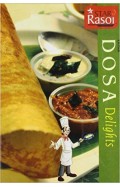- Home
- Books
- New Arrivals
- 2024 Releases
- September
- AlUla Wonder of Arabia A crossroads of civilisations
AlUla Wonder of Arabia A crossroads of civilisations
By: Abdulrahman Alsuhaibani
-
Rs 10,995.00
Due to constant currency fluctuation, prices are subject to change with or without notice.
A crossroads of civilisations.
Located at the crossroads of continents, AlUla has been a fantastic meeting point for civilizations who left behind an abundant heritage. For centuries, its oasis has been a crossing point for caravans on the Incense trade route, which connected Asia, Africa and Europe, transiting spices, myrrh, cotton, ebony, and silk. The oasis city, once named Dedan, has successively been ruled by Ancient North Arabian Kingdoms, then by the Nabataeans, an ancient civilization of Arabian mer chants, founded the ancient city of Hegra – sibling of Petra – whose flagship site Madain Saleh, listed as Unesco world heritage since 2008, houses 138 rocky tombs, sanctuaries, wells, decorated frontages, etc. Then the Roman Empire annexed the Kingdom and marked AlUla Valley with Greek and Latin influence, before Muhammad’s arrival in 630 A.D. during his campaign against the Byzantine army. Carrying the memory of their predecessors, in the 13th century Muslims reused the stones of the Dedanite and Lihyanite ruins to build what we call today the Old Town of AlUla. All these civilizations stamped the region with their unique culture, leaving exceptional archaeological sites for posterity.
A crossroads of civilisations.
Located at the crossroads of continents, AlUla has been a fantastic meeting point for civilizations who left behind an abundant heritage. For centuries, its oasis has been a crossing point for caravans on the Incense trade route, which connected Asia, Africa and Europe, transiting spices, myrrh, cotton, ebony, and silk. The oasis city, once named Dedan, has successively been ruled by Ancient North Arabian Kingdoms, then by the Nabataeans, an ancient civilization of Arabian mer chants, founded the ancient city of Hegra – sibling of Petra – whose flagship site Madain Saleh, listed as Unesco world heritage since 2008, houses 138 rocky tombs, sanctuaries, wells, decorated frontages, etc. Then the Roman Empire annexed the Kingdom and marked AlUla Valley with Greek and Latin influence, before Muhammad’s arrival in 630 A.D. during his campaign against the Byzantine army. Carrying the memory of their predecessors, in the 13th century Muslims reused the stones of the Dedanite and Lihyanite ruins to build what we call today the Old Town of AlUla. All these civilizations stamped the region with their unique culture, leaving exceptional archaeological sites for posterity.
AlUla Wonder of Arabia A crossroads of civilisations
By: Abdulrahman Alsuhaibani
Rs 10,995.00 Ex Tax :Rs 10,995.00
Zubin Mehta: A Musical Journey (An Authorized Biography)
By: VOID - Bakhtiar K. Dadabhoy
Rs 840.00 Rs 1,050.00 Ex Tax :Rs 840.00
Myths Illusions and Peace: Finding a New Direction for America in the Middle East
By: Dennis Ross
Rs 1,095.00 Ex Tax :Rs 1,095.00
The Origins of Political Order From Prehuman Times to the French RevolutioN
By: Francis Fukuyama
Rs 3,895.00 Ex Tax :Rs 3,895.00
Manning Up: How the Rise of Women Has Turned Men into Boys
By: Kay Hymowitz
Rs 995.00 Ex Tax :Rs 995.00
The Obama Syndrome: Surrender At Home War Abroad
By: Tariq Ali
Rs 1,036.00 Rs 1,295.00 Ex Tax :Rs 1,036.00
The Quest For Meaning: Developing A Philosophy Of Pluralism
By: Tariq Ramadan
Rs 1,116.00 Rs 1,395.00 Ex Tax :Rs 1,116.00
No similar books from this author available at the moment.
No recently viewed books available at the moment.
Zubin Mehta: A Musical Journey (An Authorized Biography)
By: VOID - Bakhtiar K. Dadabhoy
Rs 840.00 Rs 1,050.00 Ex Tax :Rs 840.00
AlUla Wonder of Arabia A crossroads of civilisations
By: Abdulrahman Alsuhaibani
Rs 10,995.00 Ex Tax :Rs 10,995.00














-120x187.jpg?q6)







-120x187.jpg?q6)





